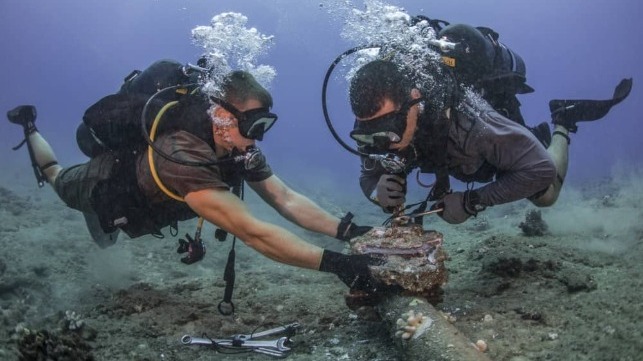Study: Submarine Data Cable Security Deserves Urgent Attention

If submarine data cables are the nerve center of modern day digital age, then the ocean is the heart of this critical infrastructure. Over 750,000 miles of cable connect the world’s continents under the ocean, carrying 99 percent of all digital communications, including phone calls, emails and financial transactions.
Undoubtedly, without submarine cables, the contemporary digital life as we know it would come to a halt. In the near future, the demand for international data transfer is set to increase with the rollout of 5G networks, reliance on Internet of Things devices and artificial intelligence.
However, with the critical role that submarine cables play, is the attention they receive commensurate with their importance? This is the subject of a recent article by Christian Bueger and Tobias Liebetrau in the journal Contemporary Security Policy (CSP).
The authors show the need to broaden security governance and geopolitical debate to include the global submarine cable network. The Russian Navy is seen as a leading threat to the cable network from its increased submarine activity. U.S. intelligence officials have reported on Russian submarines operating near Atlantic cables, part of what has come to be regarded as Russia’s interest in unconventional methods of warfare. When Russia annexed Crimea in 2014, it quickly took control of the region’s main data connection to outside world.
The location of undersea cable networks is public, making them even more vulnerable. This include the international choke points where multiple cables from different regions converge. These points are treasure troves for intelligence and their vulnerability poses a threat to the global economy if infiltrated by an enemy. For example, Portugal and Spain are key in connecting Europe to Africa, while the United Kingdom and Denmark host the connecting points for all transatlantic communications. Essentially, these points act like switches to connectivity of the entire world.
Christian and Tobias attribute three reasons to why data cables have not assumed the necessary visibility. First, it’s a common feature for all kinds of infrastructure - such as roads and buildings - to reside as a naturalized background in people’s lives, taken for granted as part of our social and technical environment.
Secondly, the invisibility of cables is amplified by their “buried” nature. Unlike roads and bridges that have a public presence, cables are out of view. Thirdly, not only are submarine data cables under the surface, but they are also out at sea - the same regions that suffer from so-called “sea-blindness” for shoreside inhabitants.
These forms of invisibility compound to a blind spot in public policy and security debates, and the authors argue that the research agenda on data cables has to evolve from its current technical niche in security and international studies to a more sweeping public discourse.
